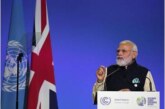The UPA-II government has contemplated to roll out the direct cash transfer (DCT) scheme designed to provide subsidy and other welfare schemes to the desired beneficiaries by transferring money to their Aadhaar-enabled bank accounts from 1 January 2013. The reported objective of introducing this direct cash transfer scheme is to prevent leakages and corruption in implementation of social welfare related schemes. To begin with, 51 districts in 16 states have been identified for the roll out of the scheme.

The DCT scheme had started in Alwar district of Rajasthan on a pilot basis in December 2011. The government had reportedly received complaints about direct cash transfer scheme for beneficiaries of kerosene oil subsidy in Alwar. Congress president Sonia Gandhi has strongly backed the Centre’s new Direct Benefit Transfer system that will ensure cash transfer directly in the hands of beneficiaries of various schemes, saying it is in line with many other “revolutionary” measures taken by the UPA.
Under this scheme, the government plans to disburse 3,200bn rupees ($58bn; £36bn) in social welfare money would be directly sent to the poor, aiming to cut out the middlemen blamed for the massive fraud that plagues the system. Previously officials only handed out cash to the poor after taking a cut — if they didn’t keep all of it for themselves — and were known to enroll fake recipients or register unqualified people. The new program would see welfare money directly deposited into recipients’ bank accounts and require them to prove their identity with biometric data, such as fingerprints or retina scans.
While terming the direct cash transfer scheme as pure magic, Union Finance Minister P. Chidambaram says: “Earlier, when a Central ministry released funds, it could never ensure their delivery to the rightful last-mile beneficiary. Even if complaints were made, it took a long time for them to be redressed. However, with the direct benefits transfer scheme, money released from Delhi immediately reaches the bank account of the intended beneficiary. It is just like magic.”
The Finance Minister regards this scheme as game-changer for governance, saying that “This is a game-changer in which we account for money. It is a game-changer in the manner in which the benefit reaches the beneficiary without any intermediation by any human being.”
The government claims that the entitlement/cash would reach the beneficiaries’ bank account directly and, hence, reduce corruption. But, the claims of the government have already been questioned both by people who never got the promised cash and, activists who point out to the high risks involved in such a fundamental shift. There’s a sense of political triumphalism over the government’s ambitious plan for cash transfers to the poor in lieu of entitlements and subsidies. If all goes well, the scheme will cover the entire country by the end of 2013.
However, some media reports indicate that UPA-II government, hobbled by allegations of financial scandals, a slowing economy and an environment of highly partisan politics, believes that cash transfers will help bolster its sagging political fortunes.
 Some state leaders have voiced their concerns about the scheme. West Bengal Chief Minister Mamata Banerjee has strongly opposed the Centre’s cash transfer scheme, saying the poor will not get the money as there is no mechanism to implement it. While talking to media persons in Parliament House in New Delhi on 17 December 2012, she said: “We don’t agree with the scheme. West Bengal never agreed for this. How will you transfer the cash? What is the mechanism? Where is the machinery? There must be some mechanism so that money can reach (the beneficiaries). Now also in the country, there are so many areas where there are no banks, no post offices. First, they (government) have to set up banks and post offices. They have to open accounts for all the people — from NREGA to all the social development programmes. Otherwise, the poor people won’t get their money.”
Some state leaders have voiced their concerns about the scheme. West Bengal Chief Minister Mamata Banerjee has strongly opposed the Centre’s cash transfer scheme, saying the poor will not get the money as there is no mechanism to implement it. While talking to media persons in Parliament House in New Delhi on 17 December 2012, she said: “We don’t agree with the scheme. West Bengal never agreed for this. How will you transfer the cash? What is the mechanism? Where is the machinery? There must be some mechanism so that money can reach (the beneficiaries). Now also in the country, there are so many areas where there are no banks, no post offices. First, they (government) have to set up banks and post offices. They have to open accounts for all the people — from NREGA to all the social development programmes. Otherwise, the poor people won’t get their money.”
In a letter to Prime Minister Manmohan Singh, Chhattisgarh Chief Minister Raman Singh has said financial inclusion and availability of information technology infrastructure are preconditions to cash transfer and there are substantial problems in the state on both accounts. “It would also be difficult to fix the monthly cash subsidies in view of fluctuation in market prices.”
Many social activists and scholars have expressed concern that the government was forcing the poor to enroll in Aadhar to get welfare benefits without putting safeguards in place to protect their privacy. They also expressed fears the government planned to eventually replace the food distribution system for the poor, the largest program of its kind in the world. Viewed in a broad spectrum, essential services are not a suitable field of experimentation for a highly centralized and uncertain technology. Some critics say that the government was trying to do too much too soon.
The bank account is the most important criterion for the cash transfers to work. But only 40 per cent of India’s population has bank accounts. The current banking network does not have the bandwidth to handle more accounts, and such a network cannot be built within a month, given that the first phase of cash transfers is slated to begin in January 2013. The banking infrastructure is very poor, people are far from these banks, when they exist they are overcrowded. Sometimes people have to walk for a day to get to the bank.
Undoubtedly, the Centre has embarked on an ambitious journey. The danger lies in setting unrealistic deadlines driven by expediency and tarnishing an important reform in the process. Even if this DCT scheme is designed to address the large chunk of vote bank, it calls for capacity building of the people at the grassroots level so that the lowest of the low can reap its benefits. Without capacity building of the target beneficiaries, its very purpose would be frustrated.
There is no reliable data for poverty. According to Finance Minister P. Chidambaram, 440 million people are living below poverty line in India. Other official sources say around 360 million people currently live in poverty. Nowever, broad estimates suggest around three-quarters of India’s 1.21 billion people live below the poverty line. Therefore, providing Aadhar card to everyone will be a tough task. The other issue is the biometric machine being used in India is not of a high class as there is a fear that the machine will deprive many of the benefits. Analysts, however, say implementing the scheme may not be easy as only 222 million people in India have so far enrolled into a biometric identity scheme, most poor families do not have bank accounts and many villages do not have a bank.
Moreover, the government of India should not follow Brazil’s Bolsa Familia program, as Brazil’s situation is different from that of India. In Brazil, poverty line is not as deep as in India. The Indian government should rather devise its own plan that suits its people. Over 30 countries, notably in Latin America, dole out conditional cash transfers – payments to the poor that meet certain conditions, like health care and education. Such transfers typically cut transaction costs, plug leakages, curb corruption, help migrant workers and are easier to monitor.
Also, many people living below poverty line do not have documents to get government entitlements; their inclusion in the program must be ensured. I think, people should use the assigned government fund for their genuine needs only and they should not waste their money on drinking and gambling. And if this mentality persists then, the government’s plan to eradicate poverty will go waste.
Jean Dreze, an economist, eloquently argues that cash transfers should never replace public services by forcing the poor to buy health and education from private providers. Cash transfers have been successful in Latin America, he says, because they are “seen as a complement, not a substitute, for public provision of health, education and other basic services”. In other words, the incentives work because the state spends and delivers public services efficiently. Dr Dreze cites the example of Brazil where almost half of all health expenses is paid by the government (compared to barely a quarter by India), and where basic health services like immunisation and ante-natal care at birth are almost universal.
Even the World Bank believes cash transfers are not a panacea. They work well, the Bank says, when the “supply of health and education services is extensive and of reasonable quality”.
Public services are badly planned (there is still no consensus, for example, on who comprise the very poor and who should be subsidised), leaky and notorious for corruption. Successive governments have shown little enthusiasm to reform what has become a highly unresponsive and sluggish state. The country’s booming middle-class have virtually seceded from public services – they avoid government hospitals and public transport, hire private security and run private generators for their electricity – and the poor bear the brunt of the miserable services. In large swathes of the country, the state has simply withered away.
Almost all political parties, including Congress, are trying to retain the rural areas by introducing such schemes. They are bent to introduce such pork-barrel schemes like direct cash transfer, in order to keep the poor to remain poor. Seeing all these facts, more weight can be put on the side that the direct cash transfer scheme is more of a political gimmick, which is played in order to ensure that the poor stay in their place, without developing at all.
Mihir Shah, a member of India’s Planning Commission accepts that the government’s timeline is ‘unrealistic’, but says many critics had confused the lack of readiness with flaws in the plan itself. He further says: “My question to them is– is it better than what is there today? That is the only way we can judge policy. I don’t think there’s a perfect solution to any of mankind’s problems.” he said.
According to Shah, a lot more work needed to be done before cash transfers could become a reality across the country. The identification drive needed to reach the vast majority of India’s poor, and villages needed banking infrastructure and Internet connectivity.
He further adds: “It is going to take time and it will happen only when it happens whatever the deadline. It will be rolled out only when these conditions are in place. But if the deadline pushes us to fix the lacunae that currently hamper the roll out of cash transfer, then we’re in the right direction.”
Viewed in a broad spectrum, bulk of official social welfare schemes end in fiasco and those at the receiving end are deprived of the benefits for lack of capacity building of the implementing officials as well as the beneficiaries. The present author during the course of his field visits in Jhansi (UP), Kaithal (Haryana) and other areas around the NCR found that both officials and the recipients of these schemes were not fully aware of the schemes and their implications.
In other words, there is a dire need of capacity building both of the officials assigned the task of implementing such schemes as well as the recipients and this task can better be accomplished by involving the civil society. The people should be prepared through capacity building to comprehend such schemes in their entirety and thereafter should be incentivized. This author is inclined to subscribe to the apt suggestion of Pratap Bhanu Mehta, president of Delhi-based think-tank Centre for Policy Research that cash transfers can never be a substitute for governance; they will actually require more sophisticated governance.



